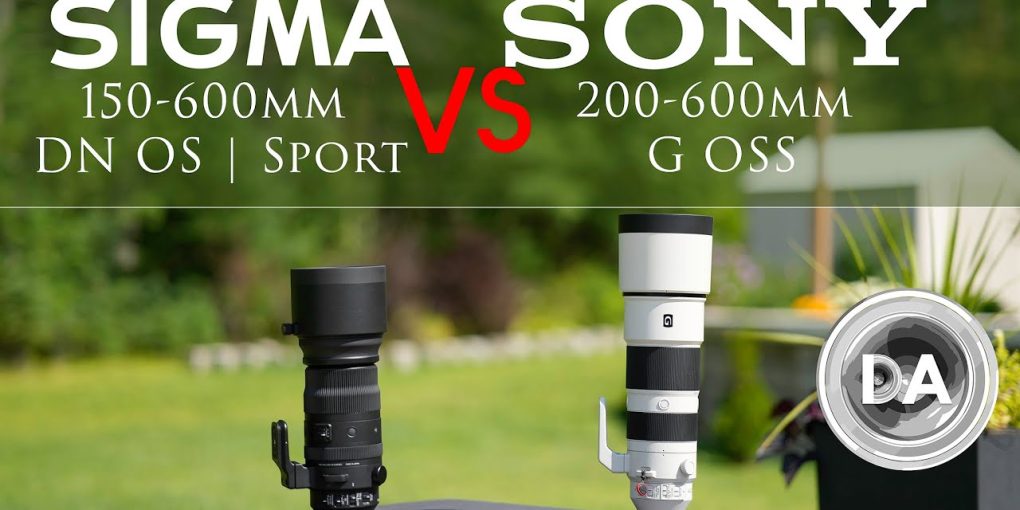Sigma 150-600 Contemporary Vs Sport: Unleashing the Power
The Sigma 150-600 Contemporary lens has one top-grade FLD element, while the Sport lens has two. Both lenses feature SLD elements.
The Contemporary lens is more compact and affordable, making it suitable for consumers. On the other hand, the Sport lens is heavier, more solid, and equipped with additional weather-seals, making it a better choice for professionals or those who need extra durability.
When it comes to choosing a telephoto lens, the Sigma 150-600 Contemporary and Sport options are often compared. Both lenses belong to the Sigma 150-600 series and offer impressive features for capturing wildlife and sports photography. In this guide, we will explore the key differences between the Contemporary and Sport lenses, helping you make an informed decision about which one suits your photography needs. Whether you are a hobbyist or a professional, understanding these distinctions will enable you to choose the right lens for your specific requirements. So, let’s dive into the details of the Sigma 150-600 Contemporary Vs Sport lenses.
Table of Contents
- Differences In Design And Construction
- Performance And Image Quality
- Size, Weight, And Handling
- Price And Value For Money
- Suitability For Wildlife Photography
- User Experiences And Reviews
- Additional Resources
- Frequently Asked Questions Of Sigma 150-600 Contemporary Vs Sport
- What Is The Difference Between Contemporary And Sport Lens?
- What Is Contemporary Lens Mean?
- What Is The Difference Between Sigma Contemporary And Art Lenses?
- How Heavy Is The Sigma 150 600 Contemporary?
- Conclusion
- CallofPhotography
Differences In Design And Construction
The Sigma 150-600 Contemporary lens is more budget-friendly and compact, with one top-grade FLD element. On the other hand, the Sport lens is heavier and offers superior build quality, featuring two FLD elements for higher performance.
| Design and Construction |
| Build quality and durability |
| The Sigma 150-600 Contemporary and Sport lenses have differences in their design and construction. Both lenses feature three SLD (Special Low Dispersion) elements. However, the Contemporary lens boasts one top-grade FLD (Fluorite’ Low Dispersion) element, while the Sports lens doubles up with two of these high-performance elements. The build quality of the Contemporary lens feels robust, but the Sports lens feels even more solid. Additionally, the Sports lens features a more comprehensive set of weather-seals compared to the Contemporary lens. This makes the Sports lens more durable and suitable for use in challenging weather conditions. |
| Mount options and compatibility |
| In terms of mount options, both lenses are available for various camera systems, ensuring compatibility with different camera brands and models. However, it is important to check the specific mount options available for each lens before making a purchase. This ensures that the chosen lens is compatible with the photographer’s camera. The mount options and compatibility of the lenses provide flexibility for photographers to use them with their preferred camera systems. |
Performance And Image Quality
The performance and image quality of the Sigma 150-600 Contemporary and Sport lenses can be compared in terms of sharpness, image clarity, lens flaring and chromatic aberration, distortion and vignetting, and overall image quality.
When it comes to sharpness and image clarity, both lenses feature three SLD elements. However, the Contemporary lens boasts one top-grade FLD element, while the Sports lens doubles up with two of these high-performance elements.
Evaluation of lens flaring and chromatic aberration reveals that both lenses perform well, with minimal issues in both areas.
In terms of distortion and vignetting, both lenses exhibit similar characteristics, with slight distortion and vignetting at the extreme ends of the focal range.
Overall, both lenses offer excellent image quality, but the Sport lens may have a slight edge in terms of sharpness and performance due to its advanced optical design.
Size, Weight, And Handling
The Sigma 150-600 Contemporary lens is lighter and more affordable, making it suitable for the consumer market. On the other hand, the Sigma 150-600 Sport lens offers a more solid build and comprehensive weather-sealing, designed for professionals and those who need extra durability.
| Comparison of dimensions and weight | Ergonomics and ease of use | Impact on portability and maneuverability |
|---|---|---|
| The Sigma 150-600 Contemporary and Sport lenses differ in size and weight. The Contemporary lens is lighter and more compact, making it suitable for hobbyists and those looking for a more portable option. On the other hand, the Sport lens is heavier and larger, designed for professional photographers who require robustness and durability. It features a more comprehensive set of weather seals, ensuring it can withstand various shooting conditions. | Both lenses are designed with ergonomics in mind, providing a comfortable grip and ease of use. The Contemporary lens feels robust, while the Sport lens feels even more solid. The Sport lens also offers additional features such as an integrated shoulder strap on the back of its case, enhancing convenience during transportation. | Considering portability and maneuverability, the Contemporary lens is a lighter and more manageable option. It is ideal for photographers who need to move around frequently while shooting wildlife or sports events. However, if you prioritize durability and can handle the added weight, the Sport lens can still provide excellent image quality and performance. |

Credit: mojocomputers.net
Price And Value For Money
In terms of pricing, there is a noticeable difference between the Sigma 150-600 Contemporary and Sport lenses. The Contemporary version is generally cheaper, making it a more budget-friendly option for photographers. On the other hand, the Sport lens tends to be more expensive.
When considering the features and performance of these lenses in relation to their price, it’s important to note that both lenses share similar characteristics. Both the Contemporary and Sport lenses feature three SLD (Special Low Dispersion) elements, which help minimize chromatic aberrations. However, the Sport lens outperforms the Contemporary lens in this aspect by incorporating two top-grade FLD (‘Fluorite’ Low Dispersion) elements for even better image quality.
While the Contemporary lens may be lighter and cheaper, the Sport lens offers superior build quality, weather-sealing, and optical performance. Ultimately, the choice between the two will depend on each photographer’s specific needs and budget.
Suitability For Wildlife Photography
Comparing the Sigma 150-600 Contemporary and Sport lenses, the Sport lens stands out with its solid build and enhanced weather-sealing. While the Contemporary lens is lighter and more affordable, the Sport lens offers sharper images and faster performance, making it a better choice for wildlife photography enthusiasts.
| Suitability for Wildlife Photography |
|---|
| Advantages of Sigma 150-600 Contemporary for capturing wildlife: |
| – Compact design with latest techniques |
| – Standard and telephoto lenses available |
| Benefits of using Sigma 150-600 Sport for wildlife photography: |
| – More robust and solid build quality |
| – Comprehensive weather-seals for protection |
| – Offers sharper image quality and faster performance |
| – Integrated shoulder strap for convenience |

Credit: www.youtube.com
User Experiences And Reviews
| User Insight | Comparison |
|---|---|
| The Contemporary lens feels robust but the Sports lens feels even more solid and features a more comprehensive set of weather-seals, which ensures better protection in challenging conditions. | Build Quality |
| Both lenses perform exceptionally well, but the Sports lens is reportedly sharper and offers faster autofocus, making it a better choice for professional photographers. | Performance |
| The Contemporary lens is lighter and more affordable, making it a suitable option for hobbyist photographers. | Price and Weight |
| Some photographers find the Sports lens to be more suitable for wildlife and sports photography due to its superior image quality and faster focusing capabilities. | Specialized Usage |
The insights from photographers who have used both lenses show that the Sigma 150-600 Contemporary and Sport lenses have their distinct advantages. The Sports lens offers better build quality, performance, and specialized usage capabilities, making it a preferred choice for professional photographers. On the other hand, the Contemporary lens provides a lighter and more affordable option for hobbyist photographers without compromising on the overall quality. Evaluating your specific needs and budget will help you determine which lens is the better fit for your photography requirements.
Additional Resources
| Additional Resources |
|---|
|
The Sigma 150-600 Contemporary and Sport lenses both feature three SLD (Special Low Dispersion) elements. However, the Contemporary lens has one top-grade FLD (‘Fluorite’ Low Dispersion) element, while the Sports lens has two. The Contemporary lens series is known for its latest techniques and compact design, with no compromise on quality. It offers a range of standard and telephoto lenses. On the other hand, the Sport lens feels more solid and boasts a more comprehensive set of weather-seals, making it suitable for professional use. The Sport lens is sharper and faster, but also comes with a higher price tag. The Contemporar

Credit: dustinabbott.net
Frequently Asked Questions Of Sigma 150-600 Contemporary Vs Sport
What Is The Difference Between Contemporary And Sport Lens?
The main difference between contemporary and sport lenses is the number of FLD elements. Contemporary lenses have one FLD element, while sport lenses have two FLD elements. Both lenses have three SLD elements.
What Is Contemporary Lens Mean?
Contemporary lens is a series of lenses by Sigma. They have the latest techniques and a compact design without compromising on quality. They offer a range of standard and telephoto lenses.
What Is The Difference Between Sigma Contemporary And Art Lenses?
The main difference between Sigma Contemporary and Art lenses is their design and lens elements. The Contemporary lens has one top-grade FLD element, while the Art lens has two. The Art lens is known for being sharper and faster, while the Contemporary lens is lighter and more affordable.
How Heavy Is The Sigma 150 600 Contemporary?
The Sigma 150 600 Contemporary weighs 68. 1 oz. It is lighter compared to the Sports version and is aimed at the “consumer” market.
Conclusion
When comparing the Sigma 150-600mm Contemporary lens to the Sports lens, there are a few key differences worth noting. The Contemporary lens is more affordable and lighter, making it a great option for hobbyists. On the other hand, the Sports lens is known for its superior sharpness and weather-sealing, making it a reliable choice for professional photographers.
Ultimately, the choice between the two lenses depends on your specific needs and budget.
I am a photography enthusiast turned blogger, sharing my passion and expertise on this blog, "CallofPhotography." Growing up surrounded by nature, I developed a love for capturing moments through my lens. After studying Fine Arts with a focus on photography, I launched my blog to share tutorials, gear reviews, and my own photographic work. Through engaging storytelling, I invites readers to join her visual journey, inspiring and empowering photographers of all levels worldwide.


